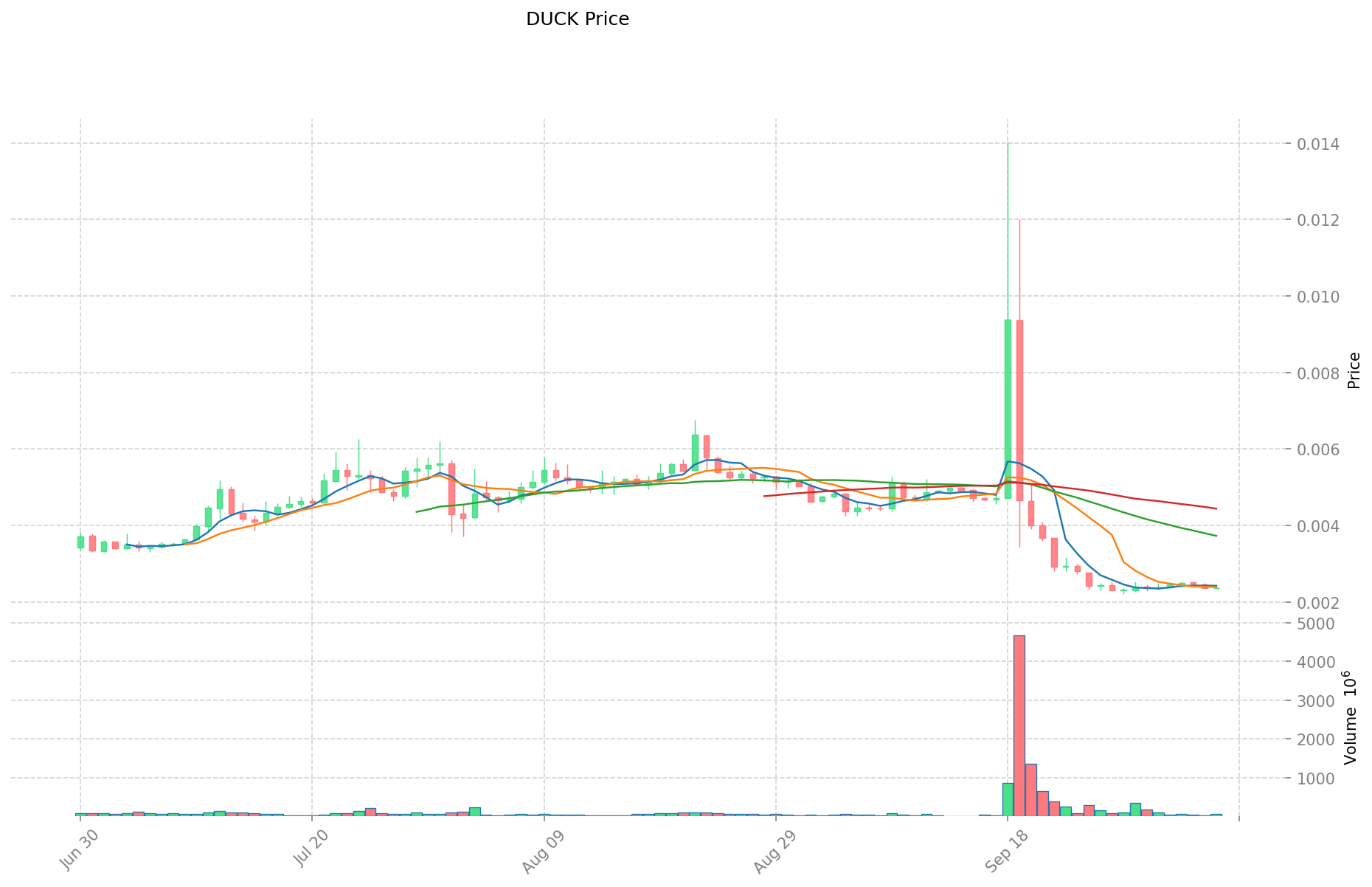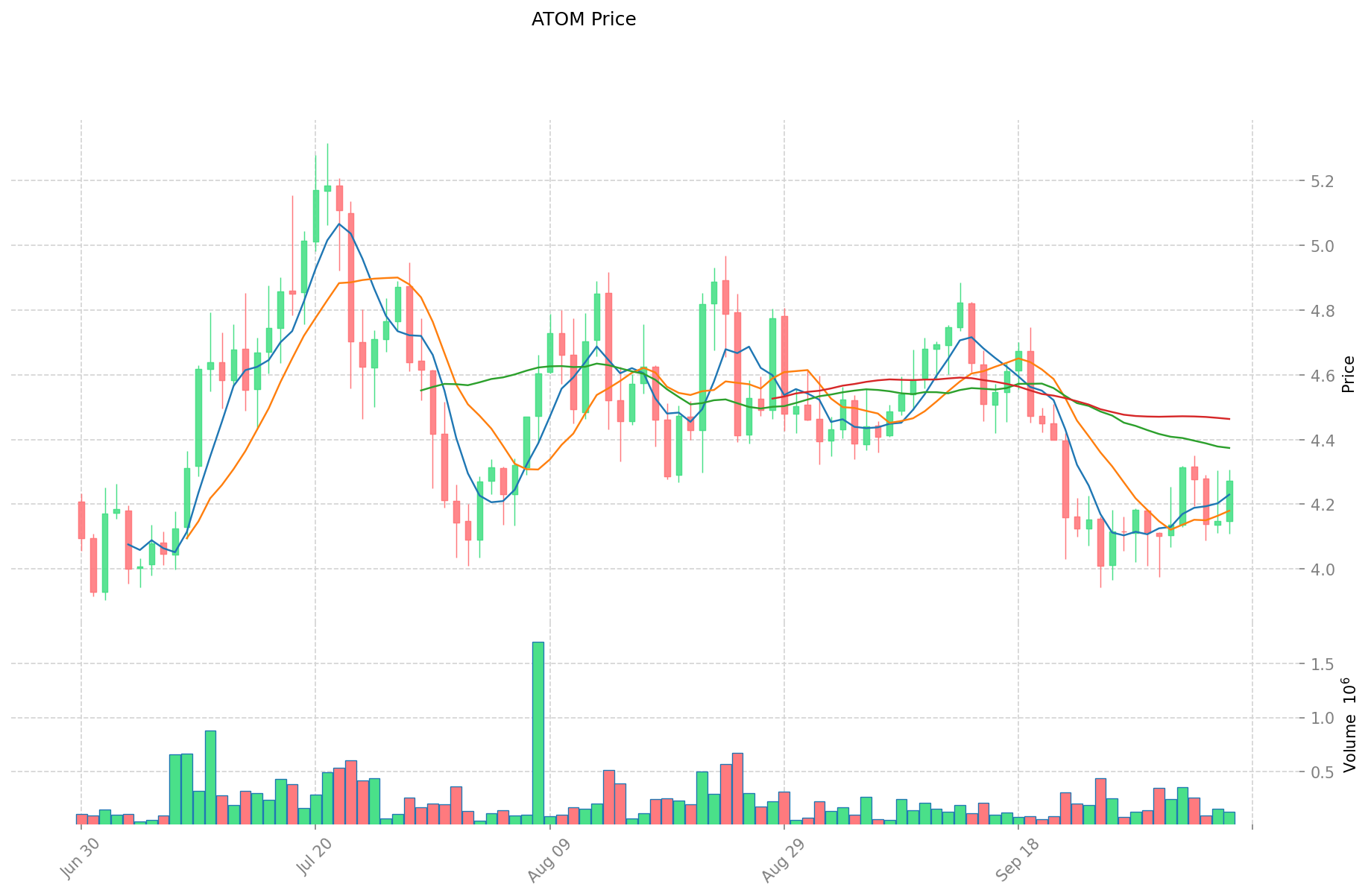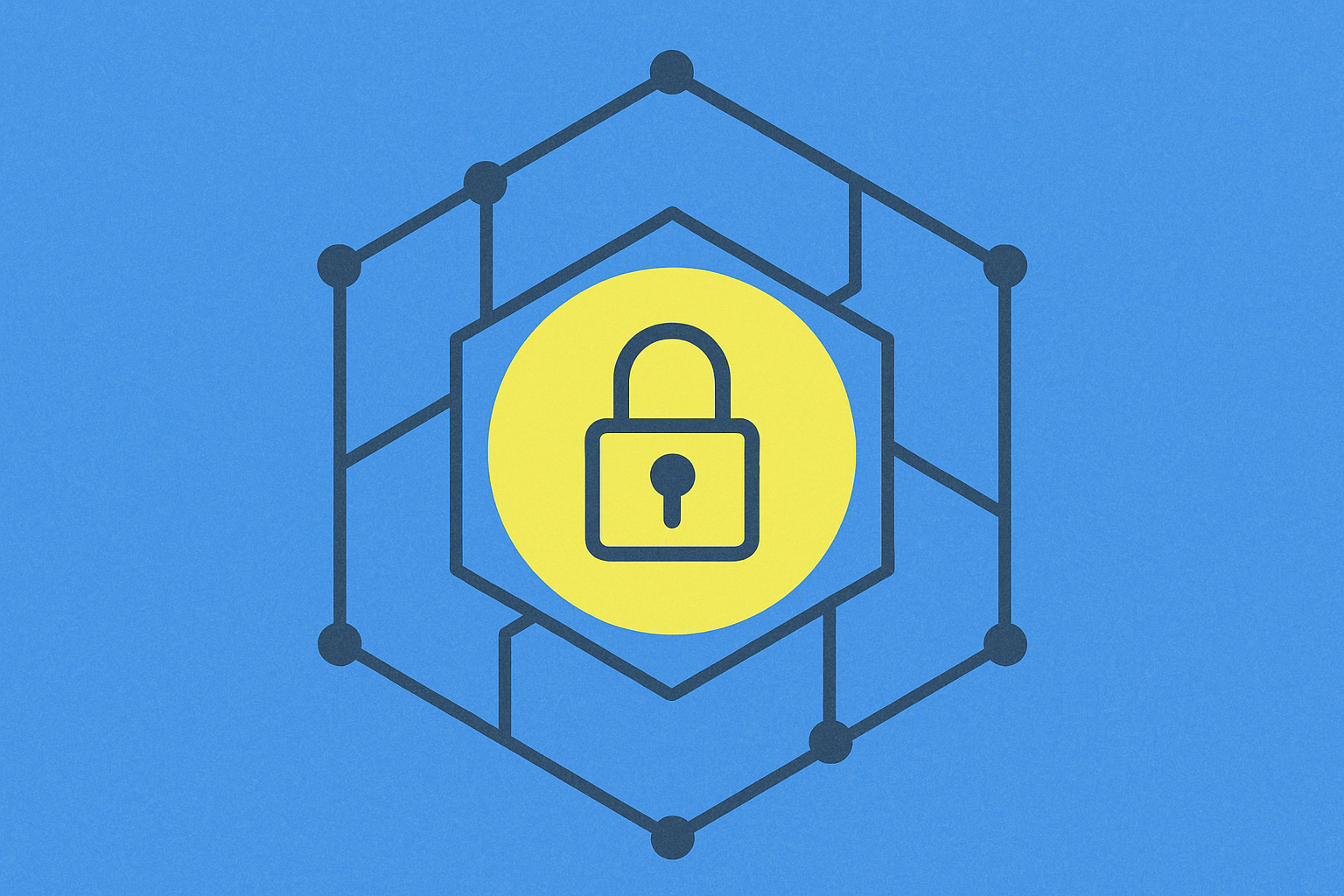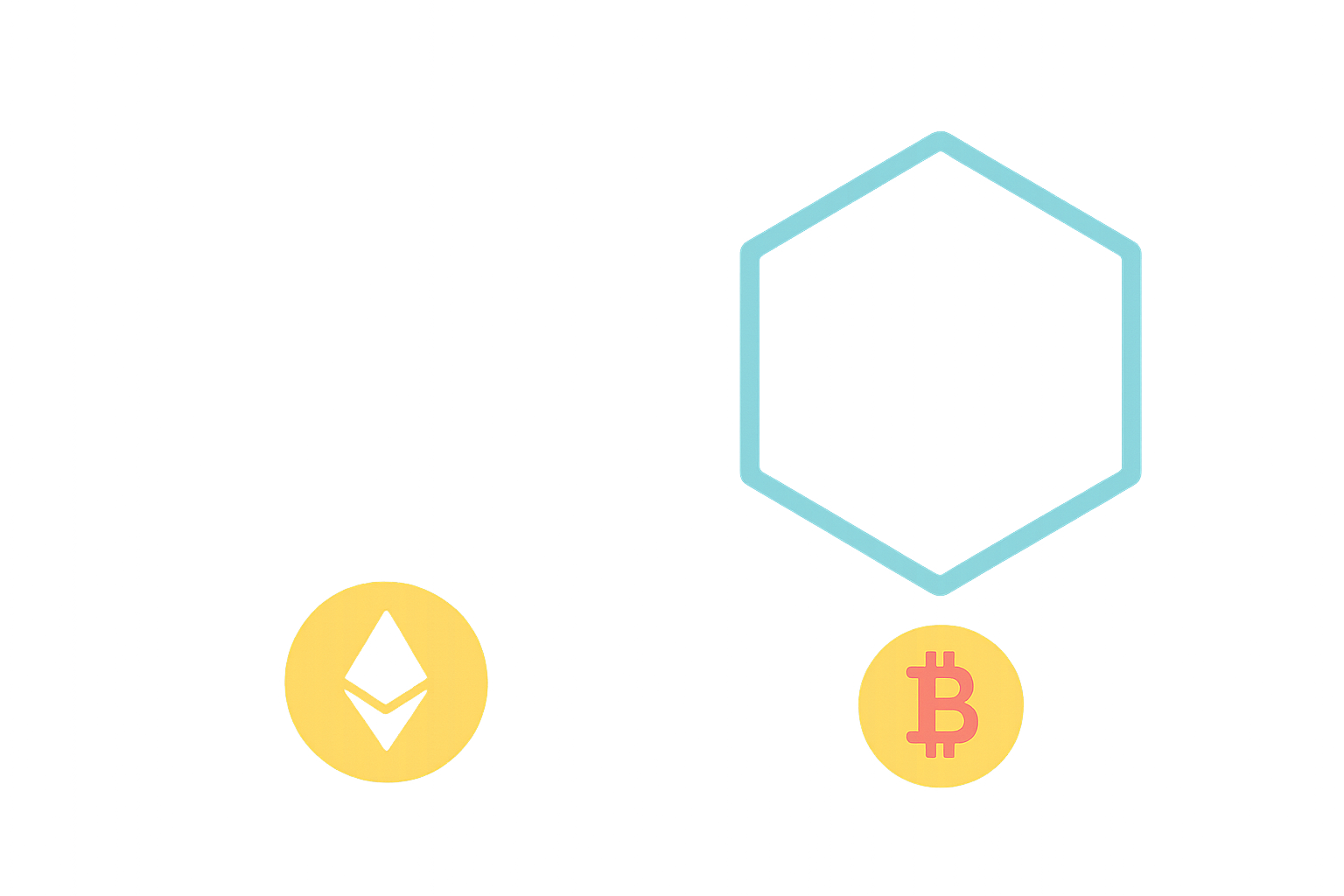DUCK ve ATOM: Modern Web Geliştirme Çerçevelerinin Karşılaştırmalı Analizi

Giriş: DUCK ve ATOM Yatırımlarının Karşılaştırılması
Kripto para piyasasında DuckChain ile Cosmos karşılaştırması, yatırımcılar için kaçınılmaz bir konu halini aldı. İki proje; piyasa değeri sıralaması, kullanım alanları ve fiyat performansı bakımından önemli ayrılıklara sahip olmasının yanı sıra, kripto varlıklar dünyasında farklı pozisyonları temsil etmektedir.
DuckChain (DUCK): 2025’te piyasaya sürüldüğünden beri, TON üzerinde ilk tüketici katmanı blokzinciri olma özelliğiyle sektör tarafından tanınmıştır.
Cosmos (ATOM): 2019’da piyasaya çıkan Cosmos, “Blokzincirlerin İnterneti” ünvanıyla anılır ve küresel işlem hacmi ile piyasa değeri açısından önde gelen kripto paralardan biridir.
Bu makalede, DuckChain ve Cosmos’un yatırım değerleri; geçmiş fiyat eğilimleri, arz mekanizmaları, kurumsal benimsenme, teknolojik ekosistemler ve gelecek öngörüleri açısından kapsamlı biçimde analiz edilerek, yatırımcıların en çok merak ettiği şu soruya yanıt aranacaktır:
“Şu anda hangisi daha avantajlı bir yatırım?”
I. Fiyat Geçmişi ve Güncel Piyasa Durumu Karşılaştırması
DUCK ve ATOM Tarihsel Fiyat Eğilimleri
- 2025: DUCK, yeni lansmanı nedeniyle yüksek oynaklık gösterdi ve fiyatı $0,001915 ile $0,01816 arasında dalgalandı.
- 2022: ATOM, Cosmos ekosisteminin benimsenmesinin artmasıyla 17 Ocak 2022’de $44,45 ile zirve yaptı.
- Analiz: Güncel piyasa döngüsünde DUCK, yeni tokenlara özgü yüksek volatilite sergilerken; ATOM, oturmuş bir proje olarak daha istikrarlı bir seyir izledi.
Güncel Piyasa Durumu (07 Ekim 2025)
- DUCK güncel fiyatı: $0,002362
- ATOM güncel fiyatı: $4,274
- 24 saatlik işlem hacmi: $140.262,58 (DUCK) vs $539.711,25 (ATOM)
- Piyasa Duyarlılık Endeksi (Korku & Açgözlülük): 70 (Açgözlülük)
Anlık fiyatları görüntülemek için tıklayın:
- DUCK güncel fiyatı Piyasa Fiyatı
- ATOM güncel fiyatı Piyasa Fiyatı
II. Proje Genel Bakışı ve Teknoloji Karşılaştırması
DUCK (DuckChain)
- DuckChain, TON üzerinde ilk tüketici katmanı blokzincir olup, TON’u Ethereum (EVM), Bitcoin (BTC) ve Arbitrum Orbit altyapısını kullanan farklı ekosistemlerle birleştirir.
- Temel özellikler:
- Telegram Stars ve hesap soyutlaması ile birleşik gas sistemi
- Telegram’da doğrudan zincir üstü işlemler
- Binlerce dApp ile birlikte çalışabilirlik
ATOM (Cosmos)
- Cosmos, bağımsız paralel blokzincirlerden oluşan merkeziyetsiz bir ağ olup, “Blokzincirlerin İnterneti” vizyonunu hayata geçirmeyi hedefler.
- Temel özellikler:
- Tendermint konsensüs mekanizması
- Blokzincirler Arası İletişim (IBC) protokolü
- Kolay blokzincir geliştirme için Cosmos SDK
Teknoloji Karşılaştırması
- Konsensüs Mekanizması: DUCK, Arbitrum Orbit’i; ATOM ise Tendermint BFT’yi kullanır
- Birlikte çalışabilirlik: Her ikisi de çapraz zincir iletişimine odaklanır ancak farklı teknik yaklaşım benimser
- Geliştirme Çerçevesi: DUCK, TON ekosisteminden faydalanırken; ATOM, Cosmos SDK sunar
III. Piyasa Performansı Analizi
DUCK
- Piyasa Değeri: $13.935.800
- Dolaşımdaki Arz: 5.900.000.000 DUCK
- Tüm zamanların en yüksek fiyatı: $0,01816 (16 Ocak 2025)
- Tüm zamanların en düşük fiyatı: $0,001915 (16 Nisan 2025)
ATOM
- Piyasa Değeri: $2.017.015.742
- Dolaşımdaki Arz: 471.926.940 ATOM
- Tüm zamanların en yüksek fiyatı: $44,45 (17 Ocak 2022)
- Tüm zamanların en düşük fiyatı: $1,16 (13 Mart 2020)
Karşılaştırmalı Analiz
- DUCK, daha yeni bir proje olup yüksek volatilite ve büyüme potansiyeline sahiptir
- ATOM, daha köklü bir piyasa varlığı ve daha büyük piyasa değerine sahiptir
- Her iki proje de birlikte çalışabilirliğe odaklanır ancak farklı ekosistemlere hitap eder
IV. Yatırım Değerlendirme Kriterleri
Potansiyel Avantajlar
- DUCK: Telegram ekosistemine entegrasyon, hızlı kullanıcı kazanımı potansiyeli
- ATOM: Birlikte çalışabilirlikte kanıtlanmış başarıya sahip, köklü proje
Potansiyel Riskler
- DUCK: Yüksek oynaklık, piyasa varlığının yeni olması
- ATOM: Birlikte çalışabilirliğe odaklanan diğer projelerden gelen rekabet
Uzun Vadeli Görünüm
- DUCK, 950 milyon küresel kullanıcı için blokzincir etkileşimini dönüştürmeyi hedefler
- ATOM, ekosistemini genişletmeye ve çapraz zincir iletişimini geliştirmeye devam eder
V. Sonuç
DUCK ve ATOM, blokzincir alanında birlikte çalışabilirlik ve kullanıcı erişilebilirliğine odaklanan özgün değer önerileri sunar. DUCK, Telegram entegrasyonu ile büyüme potansiyeli taşırken; ATOM, çapraz zincir iletişimi için daha oturmuş bir platform sağlar. Yatırımcılar, bu projeleri değerlendirirken risk toleranslarını ve uzun vadeli hedeflerini göz önünde bulundurmalıdır.


DUCK ve ATOM Yatırım Değerini Etkileyen Temel Faktörler
Arz Mekanizması Karşılaştırması (Tokenomik)
- DUCK: Gelişmiş makine öğrenimi ile fiyat tahminleri, kullanıcıların yatırım öncesi piyasa trendlerini ölçmesini sağlar
- ATOM: Arz mekanizması ile ilgili bilgi mevcut değildir
Kurumsal Benimsenme ve Piyasa Uygulamaları
- Kurumsal varlıklar: Kurumsal tercihler için yeterli veri bulunmuyor
- Kurumsal benimsenme: Sınırlı bilgiye göre DUCK iyi getiri sunuyor gibi görünmektedir
- Regülasyon tavrı: Her iki token için net regülasyon bilgisi yok
Teknik Gelişim ve Ekosistem İnşası
- DUCK teknik güncellemeleri: DEFAI sisteminin Eylül ayında lansmanı planlanıyor, yıl belirtilmemiştir
- ATOM teknik gelişimi: Teknik detaylara dair bilgi yok
- Ekosistem karşılaştırması: Ekosistem uygulamalarını karşılaştırmak için yeterli veri bulunmuyor
Makroekonomik Faktörler ve Piyasa Döngüleri
- Enflasyon ortamında performans: Karşılaştırmalı veri yok
- Para politikası etkisi: Makroekonomik etkenlerle fiyat hareketlerine dair bilgi sınırlı
- Jeopolitik faktörler: Sınır ötesi işlem talebi veya uluslararası durumlara dair veri yok
Not: Mevcut materyale göre DUCK, makine öğrenimi tabanlı fiyat tahmin yeteneklerine ve planlanan DEFAI sistem lansmanına sahip bir kripto paradır. ATOM ile ilgili bilgiler ise doğrudan kripto para birimi değil, “Atom Fund” eğitimiyle ilgilidir. Karşılaştırma için veri kısıtlıdır.
III. 2025-2030 Fiyat Tahmini: DUCK vs ATOM
Kısa Vadeli Tahmin (2025)
- DUCK: Muhafazakar $0,001416 - $0,00236 | İyimser $0,00236 - $0,0033276
- ATOM: Muhafazakar $3,03099 - $4,269 | İyimser $4,269 - $5,76315
Orta Vadeli Tahmin (2027)
- DUCK büyüme fazına geçebilir; beklenen fiyat aralığı $0,00275862819 – $0,00453429691
- ATOM boğa piyasasına girebilir; beklenen fiyat aralığı $5,57461495125 – $6,473746395
- Başlıca etkenler: Kurumsal sermaye girişi, ETF gelişmeleri, ekosistem büyümesi
Uzun Vadeli Tahmin (2030)
- DUCK: Temel senaryo $0,003029916775397 – $0,004267488416053 | İyimser senaryo $0,004267488416053 – $0,005675759593351
- ATOM: Temel senaryo $5,30411161605039 – $7,687118284131 | İyimser senaryo $7,687118284131 – $10,07012495221161
Yasal Uyarı
DUCK:
| Yıl | Tahmini En Yüksek Fiyat | Tahmini Ortalama Fiyat | Tahmini En Düşük Fiyat | Değişim Oranı |
|---|---|---|---|---|
| 2025 | 0,0033276 | 0,00236 | 0,001416 | 0 |
| 2026 | 0,003497874 | 0,0028438 | 0,002445668 | 20 |
| 2027 | 0,00453429691 | 0,003170837 | 0,00275862819 | 34 |
| 2028 | 0,0043148749896 | 0,003852566955 | 0,0025426941903 | 63 |
| 2029 | 0,004451255859807 | 0,0040837209723 | 0,003021953519502 | 72 |
| 2030 | 0,005675759593351 | 0,004267488416053 | 0,003029916775397 | 80 |
ATOM:
| Yıl | Tahmini En Yüksek Fiyat | Tahmini Ortalama Fiyat | Tahmini En Düşük Fiyat | Değişim Oranı |
|---|---|---|---|---|
| 2025 | 5,76315 | 4,269 | 3,03099 | 0 |
| 2026 | 6,97234425 | 5,016075 | 4,01286 | 17 |
| 2027 | 6,473746395 | 5,994209625 | 5,57461495125 | 40 |
| 2028 | 8,4782100936 | 6,23397801 | 5,7975995493 | 45 |
| 2029 | 8,018142516462 | 7,3560940518 | 4,560778312116 | 71 |
| 2030 | 10,07012495221161 | 7,687118284131 | 5,30411161605039 | 79 |
IV. Yatırım Stratejisi Karşılaştırması: DUCK vs ATOM
Uzun Vadeli ve Kısa Vadeli Yatırım Stratejisi
- DUCK: Tüketici odaklı blokzincir uygulamaları ve mesajlaşma platformları entegrasyonu arayan yatırımcılar için uygundur
- ATOM: Birlikte çalışabilirlik ve köklü blokzincir ekosistemleriyle ilgilenen yatırımcılar için uygundur
Risk Yönetimi ve Varlık Dağılımı
- Temkinli yatırımcılar: DUCK %20, ATOM %80
- Agresif yatırımcılar: DUCK %40, ATOM %60
- Koruma araçları: Stablecoin oranı, opsiyonlar, çapraz para kombinasyonları
V. Potansiyel Risk Karşılaştırması
Piyasa Riski
- DUCK: Yeni lansman ve düşük piyasa değeri nedeniyle yüksek volatilite
- ATOM: Birlikte çalışabilirlik sektöründe olası piyasa doygunluğu
Teknik Risk
- DUCK: Ölçeklenebilirlik, ağ stabilitesi
- ATOM: Doğrulayıcı yoğunlaşması, güvenlik açıkları
Regülasyon Riski
- Küresel regülasyon politikaları, her iki token üzerinde farklı etkiler yaratabilir
VI. Sonuç: Hangisi Daha İyi Bir Alım?
📌 Yatırım Değeri Özeti:
- DUCK avantajları: Telegram entegrasyonu, hızlı kullanıcı kazanımı potansiyeli
- ATOM avantajları: Birlikte çalışabilirlikte kanıtlanmış başarıya sahip köklü proje
✅ Yatırım Tavsiyesi:
- Yeni yatırımcılar: DUCK’a daha düşük oranda ve çeşitlendirilmiş portföyde yer verilebilir
- Deneyimli yatırımcılar: Her iki projeyi risk toleransına ve ekosistem inancına göre değerlendirmeli
- Kurumsal yatırımcılar: Hem ATOM’un oturmuş varlığını hem de DUCK’ın büyüme potansiyelini dikkate alarak detaylı inceleme yapmalı
⚠️ Risk Uyarısı: Kripto para piyasası yüksek volatiliteye sahip olup, bu makale yatırım tavsiyesi değildir.
VII. Sıkça Sorulan Sorular
S1: DUCK ve ATOM arasındaki ana farklar nelerdir? C: DUCK; tüketiciye yönelik blokzincir uygulamaları ve Telegram entegrasyonu odaklı yeni bir projedir, ATOM ise “Blokzincirlerin İnterneti” vizyonuyla birlikte çalışabilirliğe odaklanan köklü bir projedir.
S2: Son dönemde hangi kripto para daha iyi fiyat performansı gösterdi? C: ATOM, oturmuş bir proje olarak daha istikrarlı fiyat performansına sahipken; DUCK, yeni lansmanı nedeniyle daha yüksek volatilite gösterdi.
S3: DUCK’a yatırım yapmanın potansiyel avantajları nelerdir? C: DUCK, Telegram entegrasyonu, hızlı kullanıcı kazanımı potansiyeli ve yeni bir proje olarak yüksek büyüme ihtimali sunar.
S4: DUCK ve ATOM’a yatırımda ana riskler nelerdir? C: DUCK; yüksek volatilite ve yeni piyasa varlığı riskleri taşırken, ATOM; birlikte çalışabilirlik odaklı diğer projelerle rekabet riskiyle karşı karşıyadır.
S5: DUCK ve ATOM’un piyasa değerleri nasıl karşılaştırılır? C: ATOM’un piyasa değeri $2.017.015.742 ile çok daha büyükken, DUCK’ın piyasa değeri $13.935.800’dür.
S6: DUCK ve ATOM için uzun vadeli görünüm nedir? C: DUCK, 950 milyon küresel kullanıcı için blokzincir etkileşimini dönüştürmeyi hedefler; ATOM ise ekosistemini genişletmeye ve çapraz zincir iletişimini geliştirmeye odaklanır.
S7: Yatırımcılar DUCK ve ATOM arasında varlık dağılımını nasıl yapmalı? C: Temkinli yatırımcılar DUCK’a %20, ATOM’a %80; agresif yatırımcılar ise DUCK’a %40, ATOM’a %60 oranında pay ayırabilir.

2025 ATOM Fiyat Tahmini: Cosmos Ekosistemi Genişledikçe Pozitif Görünüm

NKN ve ATOM: Merkeziyetsiz iletişim ile birlikte çalışabilirlik alanında iki blockchain ağ çözümünün karşılaştırılması

DADDY vs ATOM: Modern kimya alanında moleküler bağların rekabeti

NIL ve ATOM: Lisp Programlamada Temel Kavramların İncelenmesi

GALFAN ve ATOM: Çelik Uygulamaları İçin Gelişmiş Korozyon Dirençli Kaplamaların Karşılaştırmalı Analizi

BNC vs ATOM: Kurumsal Çözümlere Yönelik İki Yenilikçi Blockchain Ağının Kıyaslaması

Dropee Günlük Kombinasyonu 11 Aralık 2025

Tomarket Günlük Kombinasyonu 11 Aralık 2025

Merkeziyetsiz Finans'ta Geçici Kayıp Nedir?

Kripto Parada Çifte Harcama: Önleme Stratejileri

Kripto Ticaretinde Wyckoff Yönteminin Anlaşılması





